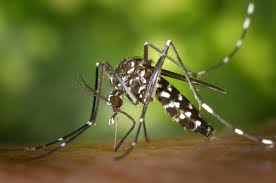The National Association of Environmental Health Companies (ANECPLA) foresees that the intense rains that have characterized this year’s spring weather have produced large pools of stagnant water that is a perfect breeding ground for the tiger mosquito.
Usually, the mosquito attacks its victims during the day, and at night it takes refuge in the local vegetation. It measures around 6 millimetres and is characterized by the colour of its pointed abdomen and its legs of black and white bands that are very visible to the naked eye.
Their bite while not life-threatening to the victim causes a swelling with discomfort and itching with the main concern being the transmission of diseases such as Dengue, Chikungunya and Zika.
The Zika virus disease is mainly spread by mosquitoes. For most people, it is a very mild infection and isn’t harmful.
However, it may be more serious for pregnant women, as there’s evidence it causes birth defects – in particular, abnormally small heads (microcephaly).
It is recommended that pregnant women should:
- Postpone non-essential travel to areas at high risk of Zika virus transmission.
- Consider postponing non-essential travel to areas at moderate risk of Zika virus transmission until after pregnancy.
High-risk areas are where there are current outbreaks of Zika virus, or where there has been an increase in the number of cases acquired locally, through mosquito bites.
If you travel to an affected area, reducing the risk of mosquito bites is the best protection. Using insect repellent and wearing loose clothing that covers your arms and legs is one recommended suggestion.

